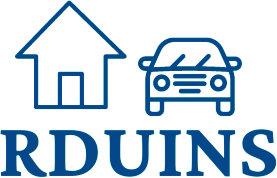Navigating through the various types of auto insurance coverage can be confusing. In this blog post, we will explain the different coverage types commonly found in auto insurance policies. This will empower you to make informed decisions and choose the right coverage for your needs.
Liability Coverage
Liability coverage is a fundamental component of auto insurance. It provides financial protection if you are at fault in an accident and cause injury or property damage to others. There are two types of liability coverage: bodily injury liability, and property damage liability. Bodily injury liability covers medical expenses and legal costs associated with injuries. Meanwhile, property damage liability covers the repair or replacement costs of damaged property. State laws often require drivers to carry a minimum amount of liability coverage.
Collision Coverage
This type of insurance reimburses you for the repair or replacement costs of your vehicle if it is damaged in a collision, regardless of fault. Whether your car collides with another vehicle or an object like a tree or a pole, collision coverage ensures that you don’t have to pay for repairs or replacement out of pocket. Keep in mind that collision coverage typically requires you to pay a deductible before the insurance company covers the remaining costs.
Comprehensive Coverage
Comprehensive coverage provides protection for non-collision-related incidents, such as theft, vandalism, natural disasters, or animal collisions. It covers the repair or replacement costs of your vehicle up to its actual cash value. Like collision coverage, comprehensive coverage also requires a deductible. Adding comprehensive coverage to your policy can offer peace of mind, especially if you live in an area prone to theft or severe weather conditions.
Personal Injury Protection
Personal Injury Protection, or PIP, is a no-fault coverage that pays for medical expenses, lost wages, and other related costs resulting from injuries sustained in a car accident, regardless of who is at fault. PIP coverage varies by state, but it typically includes medical bills, rehabilitation expenses, and even funeral costs. PIP coverage provides prompt access to necessary medical treatment and can be particularly valuable if you don’t have health insurance or have limited coverage.
Uninsured/Underinsured Motorist Coverage
Uninsured/underinsured motorist (UM/UIM) coverage protects you if you’re involved in an accident caused by a driver who either has no insurance or inadequate insurance to cover the damages. This coverage helps pay for medical expenses, vehicle repairs, and other costs incurred as a result of the accident. UM/UIM coverage is especially crucial considering the number of uninsured or underinsured drivers on the road. It provides an added layer of financial protection for you and your passengers.
Conclusion
Understanding the different types of auto insurance coverage is vital for every car owner. By familiarizing yourself with liability coverage, collision coverage, comprehensive coverage, personal injury protection (PIP), and uninsured/underinsured motorist coverage, you can make informed decisions when selecting auto insurance that suits your needs. Remember to review your policy regularly and consult with your insurance provider to ensure your coverage aligns with your circumstances. With the right coverage in place, you can drive with confidence, knowing that you are financially protected in case of unexpected events on the road.




